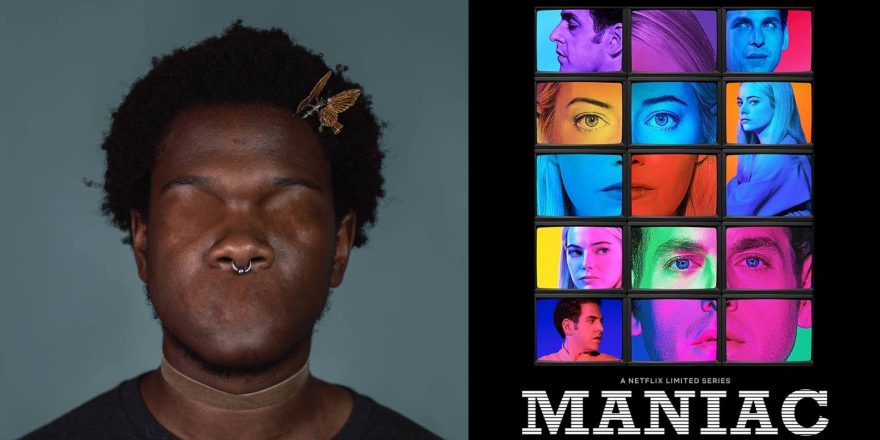Ratchet TV is a column in which our resident TV expert Shamir Bailey guides us on what’s worth watching. In this installment, Shamir dissects the whiteness and weirdness of Netflix’s new true crime doc Abducted in Plain Sight.
—Annie Fell, Associate Editor, Talkhouse Music
I came across Abducted in Plain Sight during the time everyone was gagging over Netflix’s Fyre Festival documentary and making gross jokes about the man who offered to perform fellatio for bottled water. (Meanwhile, it’s worth noting Flint still doesn’t have any clean water, but I digress.) I attempted to watch the documentary after ingesting five medicated gummies during a month long visit to my hometown of Las Vegas. Because of all the hoopla, I was positive that my next column would be about Fyre Festival, but as I watched (and waited for the edible to kick in) I wasn’t moved in any way. White men scamming people is nothing new—it’s always gonna happen, it’s how modern history books were created. So imagine me feeling left empty at the end of the documentary as the snack I consumed earlier starts hitting me at full speed. Being high and disappointed is not a vibe.
As the credits rolled, I scrolled through the recommendations to redeem my masturbatory Netflix and chill session. That’s when I saw it: Abducted in Plain Sight. I was instantly drawn to the title, and what I assumed the documentary would be about, because I love a good abduction story. I’ve also been known to partake in a foul play murder story, serial killers, and unsolved mysteries. Basically, I love anything that can be broadcasted on the ID Channel; throw in a corny reenactment segment and I’m HOOKED.
Fifteen minutes in, Abducted in Plain Sight seems to have all the makings of your typical abduction story, until it doesn’t. The turning point of this documentary is not forgiving, nor is it a classic run of the mill “creepy man abducts little girl” story. The climax seems to never end, and I don’t think there will ever be a reasonable resolution to this story, at least not for the victim Jan Broberg. Watching this while high proved to be challenging. There were parts of this story that were so daft that I worried I was possibly hallucinating and having a psychotic episode. I immediately told a close friend of mine to watch it the next day to confirm what I had just seen. My plan? If my friend saw something different, I’m calling my psychiatrist first thing! Unfortunately, everything I had watched that night was real, and in a way I kinda wish it wasn’t. For poor Jen Broberg’s sake, I wanted her story to just have been a figment of my ill imagination.
I’m not going to give any details about this documentary, because any detail would spoil how wild of a ride it is. However, I would like to meditate on something that should be talked about after viewing, or is just good to have in your mind before: The main thing that I couldn’t stop thinking about is how different this story would be had the the abductor, Robert “B” Berchtold, been literally any other race than white. The abduction took place in a mostly white Mormon community in Idaho—being from North Las Vegas, I was surrounded by Mormons, and could count on one hand how many I knew who were people of color. It also must be stated that I never knew a black Mormon the whole time I grew up there.
The Broberg family comes off throughout the film as sympathetically gullible, as if they were just overly trusting people who were taken advantage of. While Mr. and Mrs. Broberg were victims themselves, one must ask, why did they allow themselves to be so vulnerable to a very obviously predatory man when they should’ve been protecting their daughter? We learn pretty early on that the parents were blackmailed by Berchtold, but only in a way that would’ve ruined their perfect little white Mormon image they cultivated within their small community. Now, I’m not victim blaming—I understand that the whole situation would be traumatizing for anyone and no one can say definitively how they would’ve handled such a poignantly traumatizing situation, but I think the thing they were truly victim to is whiteness. The Brobergs had their daughter taken in plain sight because they lived in a small white town and went to a church filled with other white people who thought the same way they did, lived the same way they did, looked the same way they did—everyone around them looked like Berchtold. The Brobergs were blinded by their own sheltered lifestyle, and Jen had to pay the price for it.
Jen gives her own recollection of what all went down throughout the film. She seems healthy, and to have made peace with what happened to her. It seems to be the only silver lining. Her mom eventually wrote a book about the ordeal, jotting down the cathartic conversations they would have about Jen’s perspective. She has fully and wholeheartedly forgiven her parents, something I’m sure most couldn’t do—I surely couldn’t fathom forgiving the Brobergs if they were my parents.
It’s so easy to become desensitized in this crazy world during these crazy times. I have these little things I do to practice empathy: I put myself in the shoes of another who’s been through something I haven’t. I become Jen, and try to figure out the ways in which I could forgive the Brobergs as myself. I’m sure there’s more—I mean, it’s been weeks since I watched this and I am still unpacking so much—but understanding how the parents were victims because they were white and sheltered seems to be the best explanation (as well as an oxymoron) in a world where being white and sheltered is basically currency.







